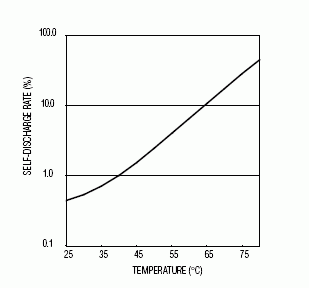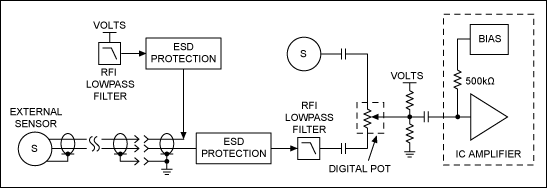Abstract: Typical integrated circuit (IC) specifications are more important than minimum and maximum specs when optimizing battery life.
Many engineers wouldn't think of using "typical" IC specs in power supply designs. But typical specs can actually be very useful, sometimes critical, when trying to optimize battery life. By keeping a clear view of design goals, and considering how data sheet limits are set, typical specs offer guidance that is sometimes missing from minimum and maximum limits.
IC production methods continually evolve. Those who've been designing analog systems for a while have probably noticed that today, fewer analog parts have A, B, and C "grades." Most power devices have just one. Silicon has gotten cheaper as wafer diameters grow and transistor dimensions shrink, but testing has remained relatively costly. Relentless price pressure forces more focused testing, and less critical parameters are given "by design" guarantees. The good news is that this has not reduced product quality. Quite the contrary, today's IC manufacturing flows generate far fewer "out of spec" parts than in previous times when "binning" was often a crutch for loose processes. Today there are larger safety margins between "on the bench" typical performance and min/max specifications. In most cases it's hard to argue that this margin is not a benefit, but when designing for battery life, conservative min/max IC limits can be misleading.
Battery life has the most value as a "typical" parameter (except in medical or other critical uses). Admittedly, operating times quoted for consumer products can be described as "optimistic"; but a guaranteed limit serves no purpose if the quoted operating time is only a fraction of the real performance. Adding up IC maximum operating currents generates mostly useless battery life numbers. Typical parameters provide more valid results, particularly data from typical operating curves and graphs, as well as typical specs from the spec table.
The last important step is to understand the system's power profile in each operating state (i.e., off, sleep, run, etc.), then determine how much time is spent in each state. This is important because it tells you where most of the energy is going, and where to spend power supply money and design effort. If your product spends most of its time off, but still biases low power circuitry in the off state, then money spent on high power efficiency might be wasted. Instead concentrate on low-load efficiency and low quiescent operating current to optimize the performance where most battery energy is used. Conversely a product with a real hardware ON/OFF switch, that disconnects the battery, should be designed for peak efficiency at the typical operating load current, not the peak. Of course you still need to consider the maximum loads to ensure that the power supply can supply peak load when needed, but the typical numbers will be the best guide to help place the efficiency "sweet spot" where it is needed most.
A similar version of this article appeared in the April 15, 2002 issue of Planet Analog magazine
Many engineers wouldn't think of using "typical" IC specs in power supply designs. But typical specs can actually be very useful, sometimes critical, when trying to optimize battery life. By keeping a clear view of design goals, and considering how data sheet limits are set, typical specs offer guidance that is sometimes missing from minimum and maximum limits.
IC production methods continually evolve. Those who've been designing analog systems for a while have probably noticed that today, fewer analog parts have A, B, and C "grades." Most power devices have just one. Silicon has gotten cheaper as wafer diameters grow and transistor dimensions shrink, but testing has remained relatively costly. Relentless price pressure forces more focused testing, and less critical parameters are given "by design" guarantees. The good news is that this has not reduced product quality. Quite the contrary, today's IC manufacturing flows generate far fewer "out of spec" parts than in previous times when "binning" was often a crutch for loose processes. Today there are larger safety margins between "on the bench" typical performance and min/max specifications. In most cases it's hard to argue that this margin is not a benefit, but when designing for battery life, conservative min/max IC limits can be misleading.
Battery life has the most value as a "typical" parameter (except in medical or other critical uses). Admittedly, operating times quoted for consumer products can be described as "optimistic"; but a guaranteed limit serves no purpose if the quoted operating time is only a fraction of the real performance. Adding up IC maximum operating currents generates mostly useless battery life numbers. Typical parameters provide more valid results, particularly data from typical operating curves and graphs, as well as typical specs from the spec table.
The last important step is to understand the system's power profile in each operating state (i.e., off, sleep, run, etc.), then determine how much time is spent in each state. This is important because it tells you where most of the energy is going, and where to spend power supply money and design effort. If your product spends most of its time off, but still biases low power circuitry in the off state, then money spent on high power efficiency might be wasted. Instead concentrate on low-load efficiency and low quiescent operating current to optimize the performance where most battery energy is used. Conversely a product with a real hardware ON/OFF switch, that disconnects the battery, should be designed for peak efficiency at the typical operating load current, not the peak. Of course you still need to consider the maximum loads to ensure that the power supply can supply peak load when needed, but the typical numbers will be the best guide to help place the efficiency "sweet spot" where it is needed most.
A similar version of this article appeared in the April 15, 2002 issue of Planet Analog magazine
 电子发烧友App
电子发烧友App




























评论